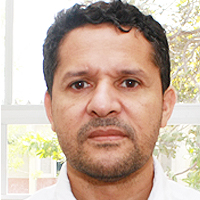Abstract
Research Article
Level of Nurses to Patients Communication and Perceived Barriers in Government Hospitals of Bahir Dar City, Ethiopia, 2020
Moges Wubneh*, Solomon Emishaw and Worku Animaw
Published: 26 June, 2020 | Volume 4 - Issue 1 | Pages: 012-026
Background: Communication is the process of exchanging information or messages from one group to the other through mutually understood verbal or non-verbal ways. Communication barrier is anything that prevents receiving and understanding the messages. poor communication between patients and the nurses’ result in an increased length of stay, wastage of the resource, patient dissatisfaction, absence of confidence, and frustration for both the nurses and the patients. This study will provide basic information on the level of nurses to patients’ communication and perceived barriers in government hospitals of Bahir Dar city.
Objective: The objective of this study was to assess the level of the nurse to patient communication and perceived barriers in government hospital of Bahir Dar city, Ethiopia, 2020.
Methods: Institution based cross-sectional mixed-methods study was conducted from February 24 – March 9/2020 in government hospitals of Bahir Dar city. A total of 380 nurses were included in the quantitative study by using simple random sampling. For both the quantitative and qualitative study, at the initial stage of data collection and interview; informed consent was obtained from respondents. Data were entered into Epi Data 4.6 and analyzed with a statistical package of social science version 25. Data were mainly analyzed using descriptive statistics and binary logistic regression. For the qualitative study, purposive sampling technique was employed, and 7 participants were interviewed. Thematic analysis was used.
Results: From the total participants 36.5% of nurses were found to have poor communication. Variables which have statistically significant associations with the level of communication were educational level, work experience, the unwillingness of nurses, and lack of communication skill. The highest perceived communication barriers were lack of continuous training with 82.7% followed by workload with 80.7% and lack of medical facilities with 79.2% as reported by nurses. All environmental-related barriers were the perceived barriers of the nurse to patient communication.
Conclusion: In this study, the communication of nurses to patients is found to low. To enhance communication with the patients; nurses and other stakeholders like the ministry of health, the health bureau, and hospital authorities need to recognize the communication barriers. Giving awareness on the communication barrier for the nurses helps to minimize the barriers and improve the nurses to patients’ communication.
Read Full Article HTML DOI: 10.29328/journal.cjncp.1001023 Cite this Article Read Full Article PDF
Keywords:
Communication; Barrier; Nurse-patient; Bahir Dar; Ethiopia; 2020
References
- Elaine B. Effective communication skills in nursing practice. Nurs Stand. 2014; 29: 53-59. PubMed: https://pubmed.ncbi.nlm.nih.gov/25467362/
- Lambrini K, Papathanasiou Ioanna V. Communication in nursing practice. Mater Sociomed. 2014; 26: 65-67. PubMed: https://www.ncbi.nlm.nih.gov/pmc/articles/PMC3990376/
- Ros W. Effective communication skills for the “caring” nurse. The Great Teachers: Tertiary Place. 2012.
- Albagawi Bander S, Jones Linda K. Quantitative exploration of the barriers and facilitators to nurse-patient communication in Saudi Arabia. J Hospital Admin. 2017; 6: 16.
- Communication barrier between nurse and patient at the hospital: A systematic review. J Health Policy Management. 2019; 4: 105-110.
- Usha RK. Communication barriers. 2016.
- Bridges J, Nicholson C, Maben J, Pope C, Flatley M, et al. Capacity for care: Meta‐ethnography of acute care nurses' experiences of the nurse‐patient relationship. J Adv Nurs. 2013; 69: 760-772. PubMed: https://pubmed.ncbi.nlm.nih.gov/23163719/
- Bronwyn H, Susan B, Linda W. Nursing the patient with complex communication needs: Time as a barrier and a facilitator to successful communication in hospital. J Adv Nurs. 2012; 68: 116-126. PubMed: https://pubmed.ncbi.nlm.nih.gov/21831131/
- Roohangiz N, Maryam A, Maryam S, Mehrdad K, Elham S. Communication barriers perceived by nurses and patients. Glob J Health Sci. 2015; 8: 65-74. PubMed: https://www.ncbi.nlm.nih.gov/pmc/articles/PMC4954910/
- Steve H, Elena H. Barriers to the practice of rural and remote nursing in Canada. European Sci J. 2016; 12: 7857-7881.
- Zamanzadeh V, Rassouli M, Abbaszadeh A, Nikanfar A, Alavi-Majd H, et al. Factors influencing communication between the patients with cancer and their nurses in oncology wards. Indian J Palliative Care. 2014; 20: 12-20. PubMed: https://www.ncbi.nlm.nih.gov/pmc/articles/PMC3931236/
- Gørill H. Nurse–patient interaction is a resource for hope, meaning in life, and self‐transcendence in nursing home patients. Scand J Caring Sci. 2014; 28: 74-88. PubMed: https://pubmed.ncbi.nlm.nih.gov/23461626
- Sue L. “The button” initiating the patient-nurse interaction. Clin Nurs Res. 2014; 23: 188-200. PubMed: https://pubmed.ncbi.nlm.nih.gov/23524539
- Rezende LCM, De Freitas Macedo Costa KN, Martins KP, Da Costa TF, Dos Santos SR, et al. Therapeutic communication between nurses and patients in pre-operative during an admission in a medical surgical unit. Surgery. 4:5.
- Amoah VMK, Anokye R, Boakye DS, Acheampong E, Budu-Ainooson A, et al. A qualitative assessment of perceived barriers to effective therapeutic communication among nurses and patients. BMC Nursing. 2019; 18: 4. PubMed: https://www.ncbi.nlm.nih.gov/pubmed/30792611
- Olana FR, Masresha A, Asresash D, Tefera B. Predictors of therapeutic communication between nurses and hospitalized patients. Heliyon. 2019; 5: e02665. PubMed: https://www.ncbi.nlm.nih.gov/pmc/articles/PMC6838810/
- Benjamin S, Sim J, Kingstone T, Baker S, Waterfield J, et al. Saturation in qualitative research: Exploring its conceptualization and operationalization. Quality & quantity. 2018; 52: 1893-1907. PubMed: https://www.ncbi.nlm.nih.gov/pubmed/29937585
- Amoah VMK, Reindolf A, Serwaa BD, Naomi G. Perceived barriers to effective therapeutic communication among nurses and patients at Kumasi south hospital. Cogent Medicine. 2018; 5: 1459341.
- Peleki T, Resmpitha Z, Mavraki A, Linardakis M, Rikos N, et al. Assessment of patients' and nurses' opinions on bidirectional communication during hospitalization: A descriptive study. Health Sci J. 2015; 9: 1.
- Bolarinwa OA. Principles and methods of validity and reliability testing of questionnaires used in social and health science researches. Nigerian Postgraduate Medical Journal. 2015; 22: 195-201. PubMed: https://pubmed.ncbi.nlm.nih.gov/26776330/
- Dormann Carsten F, Elith J, Bacher S, Buchmann C, Carl G, et al. Collinearity: A review of methods to deal with it and a simulation study evaluating their performance. Ecography. 2013; 36: 27-46.
- Schoonenboom J, Johnson RB. How to construct a mixed methods research design. Kolner Z Soz Sozpsychol. 2017; 69: 107-131. PubMed: https://www.ncbi.nlm.nih.gov/pmc/articles/PMC5602001/
- Victoria C, Braun V, Hayfield N. Thematic analysis. Qualitative psychology: A Practical Guide Res Methods. 2015: 222-248.
- Swindells C, Willmott S. Degree vs diploma education: Increased value to practice. Br J Nurs. 2003; 12: 1096-1104. PubMed: https://pubmed.ncbi.nlm.nih.gov/14581843
- Angela CE, Lik TP, Yin CSS, Wong FY, Winsome L. Nurses’ perspectives on their communication with patients in busy oncology wards: A qualitative study. PloS One. 2019; 14. PubMed: https://www.ncbi.nlm.nih.gov/pmc/articles/PMC6812861/
- Al-Harasis S. Impact of the language barrier on quality of nursing care at armed forces hospitals, Taif, Saudi Arabia. Middle East J Nurs. 2013; 101: 1-8.
- Mukhlid A, Jed D, Michelle G. Barriers to nurse-patient communication in Saudi Arabia: An integrative review. BMC Nurs. 2019; 18: 61.
- Anoosheh M, Zarkhah S, Faghihzadeh S, Vaismoradi M. Nurse–patient communication barriers in Iranian nursing. Int Nurs Rev. 2009; 56: 243-249. PubMed: https://pubmed.ncbi.nlm.nih.gov/19646175
- Kargar JM, Somayeh R. Evaluation of barriers contributing to the demonstration of effective nurse-patient communication in educational hospitals of Jahrom, 2014. Global J Health Sci. 2014; 6: 54-60. PubMed: https://www.ncbi.nlm.nih.gov/pubmed/25363103
- The importance of the optimal nurse-to-patient ratio Nov 10 2016.
- Taiwo AO. Effect of communication on nurse-patient relationship in national orthopedic hospital, Igbbobi, Lagos. West African J Nurs. 2014; 25.
- Christianah OO, Oluwakorede O. Peplau’s theory of psychodynamic nursing and nurse-patient interaction: A literature review.
- Fathi IA, Mohammed TF, Akel Dalal T. Nurse communication in health education: Patients’ perspective. Clinical Nursing Studies. 2015; 3: 94-102.
- Hui TL, Desley H, Emily A. Factors affecting effective communication between registered nurses and adult cancer patients in an inpatient setting: A systematic review. Int J Evid Based Healthcare. 2011; 9: 151-164. PubMed: https://pubmed.ncbi.nlm.nih.gov/21599844/
- Soheyla B, Shahla M, Zahra M. Obstacles in nurse - elderly relationship from the patients' points of view. 2009.
Figures:

Figure 1

Figure 2

Figure 3
Similar Articles
-
A Multidisciplinary Approach to the Assessment and Management of Pre-school Age Neuro-developmental Disorders: A Local ExperienceMichael O Ogundele*. A Multidisciplinary Approach to the Assessment and Management of Pre-school Age Neuro-developmental Disorders: A Local Experience. . 2017 doi: 10.29328/journal.hjncp.1001001; 1: 001-012
-
A Case-Study of the Anatomy of a Miscommunication: Why colleagues as patients develop complications?Colin Pritchard*,Jeremy Latham. A Case-Study of the Anatomy of a Miscommunication: Why colleagues as patients develop complications?. . 2018 doi: 10.29328/journal.cjncp.1001006; 2: 008-011
-
Knowledge, attitude, practice and associated factors towards nursing care documentation among nurses in West Gojjam Zone public hospitals, Amhara Ethiopia, 2018Atsedemariam Andualem*,Tarekegn Asmamaw,Mezinew Sintayehu,Tiliksew Liknaw,Afework Edmealem,Bekalu Bewuket,Mihretie Gedfew. Knowledge, attitude, practice and associated factors towards nursing care documentation among nurses in West Gojjam Zone public hospitals, Amhara Ethiopia, 2018. . 2019 doi: 10.29328/journal.cjncp.1001010; 3: 001-013
-
Patients’ satisfaction and associated factors towards nursing care in Dessie Referral Hospital, Northeast EthiopiaAfework Edmealem*,Yabebal Asfaw,Sewunet Ademe,Belachew Tegegne. Patients’ satisfaction and associated factors towards nursing care in Dessie Referral Hospital, Northeast Ethiopia. . 2019 doi: 10.29328/journal.cjncp.1001018; 3: 053-058
-
Health care workers knowledge, attitude and practice towards hospital acquired infection prevention at Dessie referral hospital, Northeast EthiopiaHailemariam Gezie,Emebet Leta,Fikrte Admasu,Sisay Gedamu*,Abebe Dires,Debrnesh Goshiye. Health care workers knowledge, attitude and practice towards hospital acquired infection prevention at Dessie referral hospital, Northeast Ethiopia. . 2019 doi: 10.29328/journal.cjncp.1001019; 3: 059-063
-
Level of Nurses to Patients Communication and Perceived Barriers in Government Hospitals of Bahir Dar City, Ethiopia, 2020Moges Wubneh*,Solomon Emishaw,Worku Animaw. Level of Nurses to Patients Communication and Perceived Barriers in Government Hospitals of Bahir Dar City, Ethiopia, 2020. . 2020 doi: 10.29328/journal.cjncp.1001023; 4: 012-026
-
Knowledge and attitude of workers towards HIV post-exposure prophylaxis and exposure of staffs to sharp injuries in Dessie Referral Hospital: 2020; A cross sectional studySewunet Ademe*,Mekia Mohammed,Afework Edmealem. Knowledge and attitude of workers towards HIV post-exposure prophylaxis and exposure of staffs to sharp injuries in Dessie Referral Hospital: 2020; A cross sectional study. . 2020 doi: 10.29328/journal.cjncp.1001025; 4: 032-038
-
The impact of the surgical mask on the relationship between patient and family nurse in primary careAna Raquel Braga*,Irene P Carvalho. The impact of the surgical mask on the relationship between patient and family nurse in primary care. . 2021 doi: 10.29328/journal.cjncp.1001030; 5: 003-008
-
Self-care practice and associated factors among type 2 adult diabetic patients on follow up clinic of Dessie referral hospital, Northeast EthiopiaSisay Gedamu Addis*,Sewunet Ademe Kassahun,Samuel Anteneh Ayele,Abebe Dires Nega,Kirubel Dagnaw Tegegne. Self-care practice and associated factors among type 2 adult diabetic patients on follow up clinic of Dessie referral hospital, Northeast Ethiopia. . 2021 doi: 10.29328/journal.cjncp.1001034; 5: 031-037
-
Sleep quality and associated factors among patients with chronic illness at South Wollo Zone Public Hospitals, Northeast EthiopiaAfework Edmealem*,Sewunet Ademe,Atsedemariam Andualem . Sleep quality and associated factors among patients with chronic illness at South Wollo Zone Public Hospitals, Northeast Ethiopia. . 2021 doi: 10.29328/journal.cjncp.1001036; 5: 043-050
Recently Viewed
-
Advancing Forensic Approaches to Human Trafficking: The Role of Dental IdentificationAiswarya GR*. Advancing Forensic Approaches to Human Trafficking: The Role of Dental Identification. J Forensic Sci Res. 2025: doi: 10.29328/journal.jfsr.1001076; 9: 025-028
-
Scientific Analysis of Eucharistic Miracles: Importance of a Standardization in EvaluationKelly Kearse*,Frank Ligaj. Scientific Analysis of Eucharistic Miracles: Importance of a Standardization in Evaluation. J Forensic Sci Res. 2024: doi: 10.29328/journal.jfsr.1001068; 8: 078-088
-
Sinonasal Myxoma Extending into the Orbit in a 4-Year Old: A Case PresentationJulian A Purrinos*, Ramzi Younis. Sinonasal Myxoma Extending into the Orbit in a 4-Year Old: A Case Presentation. Arch Case Rep. 2024: doi: 10.29328/journal.acr.1001099; 8: 075-077
-
Toxicity and Phytochemical Analysis of Five Medicinal PlantsJohnson-Ajinwo Okiemute Rosa*, Nyodee, Dummene Godwin. Toxicity and Phytochemical Analysis of Five Medicinal Plants. Arch Pharm Pharma Sci. 2024: doi: 10.29328/journal.apps.1001054; 8: 029-040
-
Antibacterial Screening of Lippia origanoides Essential Oil on Gram-negative BacteriaRodrigo Marcelino Zacarias de Andrade, Bernardina de Paixão Santos, Roberson Matteus Fernandes Silva, Mateus Gonçalves Silva*, Igor de Sousa Oliveira, Sávio Benvindo Ferreira, Rafaelle Cavalcante Lira. Antibacterial Screening of Lippia origanoides Essential Oil on Gram-negative Bacteria. Arch Pharm Pharma Sci. 2024: doi: 10.29328/journal.apps.1001053; 8: 024-028.
Most Viewed
-
Evaluation of Biostimulants Based on Recovered Protein Hydrolysates from Animal By-products as Plant Growth EnhancersH Pérez-Aguilar*, M Lacruz-Asaro, F Arán-Ais. Evaluation of Biostimulants Based on Recovered Protein Hydrolysates from Animal By-products as Plant Growth Enhancers. J Plant Sci Phytopathol. 2023 doi: 10.29328/journal.jpsp.1001104; 7: 042-047
-
Sinonasal Myxoma Extending into the Orbit in a 4-Year Old: A Case PresentationJulian A Purrinos*, Ramzi Younis. Sinonasal Myxoma Extending into the Orbit in a 4-Year Old: A Case Presentation. Arch Case Rep. 2024 doi: 10.29328/journal.acr.1001099; 8: 075-077
-
Feasibility study of magnetic sensing for detecting single-neuron action potentialsDenis Tonini,Kai Wu,Renata Saha,Jian-Ping Wang*. Feasibility study of magnetic sensing for detecting single-neuron action potentials. Ann Biomed Sci Eng. 2022 doi: 10.29328/journal.abse.1001018; 6: 019-029
-
Pediatric Dysgerminoma: Unveiling a Rare Ovarian TumorFaten Limaiem*, Khalil Saffar, Ahmed Halouani. Pediatric Dysgerminoma: Unveiling a Rare Ovarian Tumor. Arch Case Rep. 2024 doi: 10.29328/journal.acr.1001087; 8: 010-013
-
Physical activity can change the physiological and psychological circumstances during COVID-19 pandemic: A narrative reviewKhashayar Maroufi*. Physical activity can change the physiological and psychological circumstances during COVID-19 pandemic: A narrative review. J Sports Med Ther. 2021 doi: 10.29328/journal.jsmt.1001051; 6: 001-007

HSPI: We're glad you're here. Please click "create a new Query" if you are a new visitor to our website and need further information from us.
If you are already a member of our network and need to keep track of any developments regarding a question you have already submitted, click "take me to my Query."


















































































































































